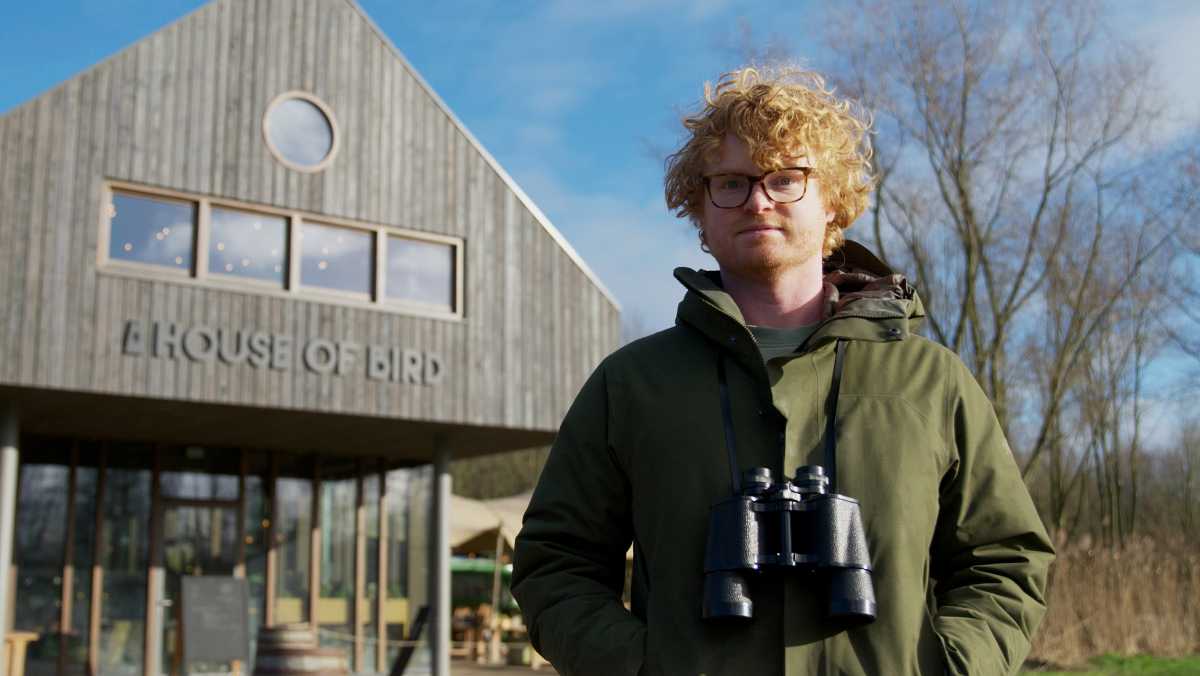Storytelling: tell your business story

- Laura van Dijk
- 9 February 2022
- Edited 1 June 2023
- 4 min
- Managing and growing
- Marketing
Every entrepreneur has a story. Whether you started your business in a special way, work with local products, or have grown in a short time through a new innovation. Bring your customers into the story behind your business. Read 5 tips on how to tell your unique business story. This will help you engage customers with your (business).
Sustainable beer brewery Bird Brewery brews beers like the Rumbled Robin, Thatisother Cuckoo and Nognietnaar Huismus. The beers are available at more than 1,000 bar, restaurants and specialty beer shops. The brewery tells one story and uses it in all its communications. Entrepreneur Van Bemmel is an enthusiastic birdwatcher. So, birds, nature and sustainable business play a big role in their story. "This results in loyal customers and sales points," co-founder Ralph van Bemmel explains enthusiastically. Together with creative copywriter Tim Daalderop, Van Bemmel shares his experience and tips.
6 times more brain activity occurs in the brain of the reader or viewer
What is storytelling?
Daalderop clarifies, "Storytelling is wrapping your message in a story. This makes it more appealing to read, watch or listen to. And it creates 6 times more activity in the brain of the reader or viewer. That means more attention to your story, and an increased likelihood of a purchase." Bird Brewery conveys their passion for birds through their brewery. "This is reflected in our product names and on communication channels: flyers, website and social media. There we portray ourselves as nature- and bird-loving beer sommeliers," Van Bemmel explains.

Do not kid yourself with the idea that your adventure has to be very special and spectacular
Storytelling in 5 steps
Get started with storytelling yourself in these 5 steps.
1. Discover your story
Van Bemmel and his business partner Rik van den Berg met in 2016 during the beer sommelier training at StiBON. "We are both bird lovers so our story and the company name Bird Brewery was quickly determined," he says.
"Good storytelling starts with discovering your story," says Daalderop. "Do you have a mission? Build your company story around that. So that your storytelling aligns with your mission, vision and strategy. Those who do this from a real passion have an advantage. Storytelling simply goes easier when you are truly enthusiastic."
Do you not have a mission statement yet? Discover your business story in your company's history. And see what sets you apart from your competitors. "It sounds cliché, but that is at the heart of every unique story," he says. Daalderop tips: "Ask friends or customers what makes your business unique. It can be things like a special service, a regular coffee moment with the customer, or a certain kind of humour. Or apply Simon Sinek's Golden Circle (in Dutch)."
2. Build your story
Start your story with a main character, advises bestselling author and CEO of StoryBrand Donald Miller in his book Building a story brand. Your main character is your customer and she has a problem or a frustration. She then meets someone or something who helps her come up with a plan to solve the problem. This helper is your business, product or service. Then, the helper activates the main charater which solves the problem.
"Do not kid yourself with the idea that your adventure has to be very special and spectacular," warns Daalderop. "It can also be a small personal adventure with details. For example, a business process like recycling plastic waste, or a personal event."
3. Come up with proof
When you can show proof that your story rings true, you are more credible to (potential) customers. For example, you should not pretend to be more sustainable than you are. This is called greenwashing and you can be fined for it. Read how to avoid greenwashing.
Bird Brewery's story is that they work with nature. But as a brewery, they use 4 to 6 litres of clean drinking water to make one litre of beer. This is actually harmful to the environment. What they do? They make it part of their story. They show they make up for it by giving drinking water to developing countries and planting trees. Their website shows exactly how many trees and litres of drinking water they have already donated. In doing so, they prove that they are working together with nature.
Even a child knows what a tree or a litre of water is. So readers understand more quickly what our sustainable impact is.
4. Share your story with the world
Think about where you want to tell your story. Think of marketing channels you already have such as your flyers, business cards, (About Us page on your) website, social media, and your shop window. And think of marketing channels where you want to reach (new) customers. To do so, choose the channels on which your target audience is active and which suit you and your business.
"Bring focus to your channels," Van Bemmel advises. "Start small, that way you have more time to get your story across properly." Daalderop concurs with the entrepreneur's advice. "Start with one channel, such as Instagram, and go 100% for that. When that runs well, you can add an additional channel."
5. Create your text and images
First, decide which piece of the story you want to tell in which place (which you determined in the previous step). Van Bemmel explains why: "Each channel has a different target audience. When we work with a nature organisation, it's about nature. If we make a flyer for a wholesaler, then we talk about beer. When we send a newsletter to customers, we focus more on content knowledge of our products."
- Now is the time to write it down. Van Bemmel and Daalderop offer the following tips for creative writing:
- Keep it personal and relatable. People like to read something about other people; it captures their imagination. Use elements the reader has to deal with in their daily life.
- Make it concrete. Do not talk about transparency and sustainability, but give concrete examples. For example, Van Bemmel tells how much drinking water he donates per beer sold.
- Write enthusiastically and positively ,and use short sentences and clear, understandable words.
- Let others read along before you tell your story. Incorporate their comments to make your text even better.
Images help to clarify your story. If you look at Bird Brewery's website, you will see all kinds of videos and moving animations. For example, there is an ascending counter showing how many trees they have planted and a counter showing how much drinking water they have donated. "We tell these sustainability activities as concretely as possible," Van Bemmel explains. "Even a child knows what a tree or a litre of water is. So readers understand more quickly what our sustainable impact is."

